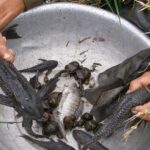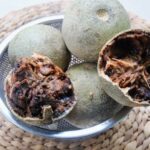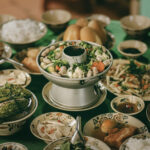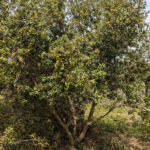While the name may be unfamiliar to many, the gùi fruit is a gift from nature to the locals of the Mekong Delta region, evoking childhood memories and survival journeys into the forest.
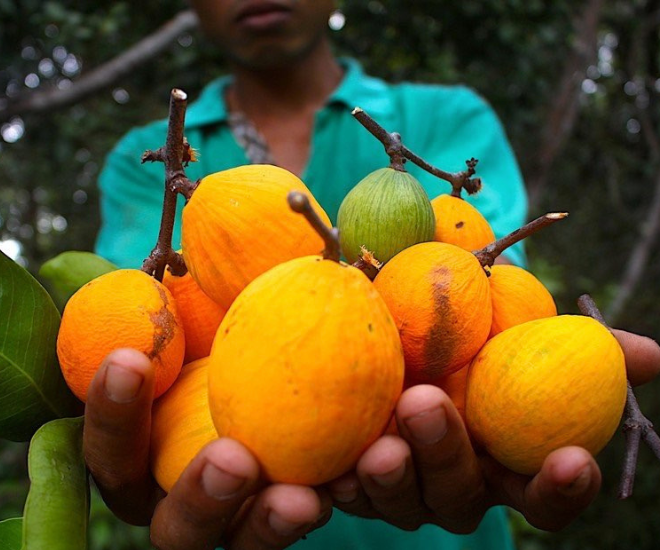
Unripe gùi fruit has a green peel and is inedible due to its bitter and astringent taste. It is commonly found in some provinces in the Southeast region and the southern part of the Central Highlands, with a particularly abundant presence in An Giang province.
The gùi fruit comes from the gùi vine, a woody liana scientifically known as Willughbeia cochinchinensis. This plant typically grows wild in tropical rainforests, boasting a large, rough trunk that sends out numerous branches, clinging to larger trees to reach the sunlight.
Thus, to find gùi trees bearing abundant and delicious fruit, one must venture deep into dense forests or high mountains with lush vegetation. Unripe gùi fruit is dark green and hard, turning golden-orange when ripe, with a slightly thick and glossy peel. Its interior is segmented like a mangosteen but softer and more fragrant.
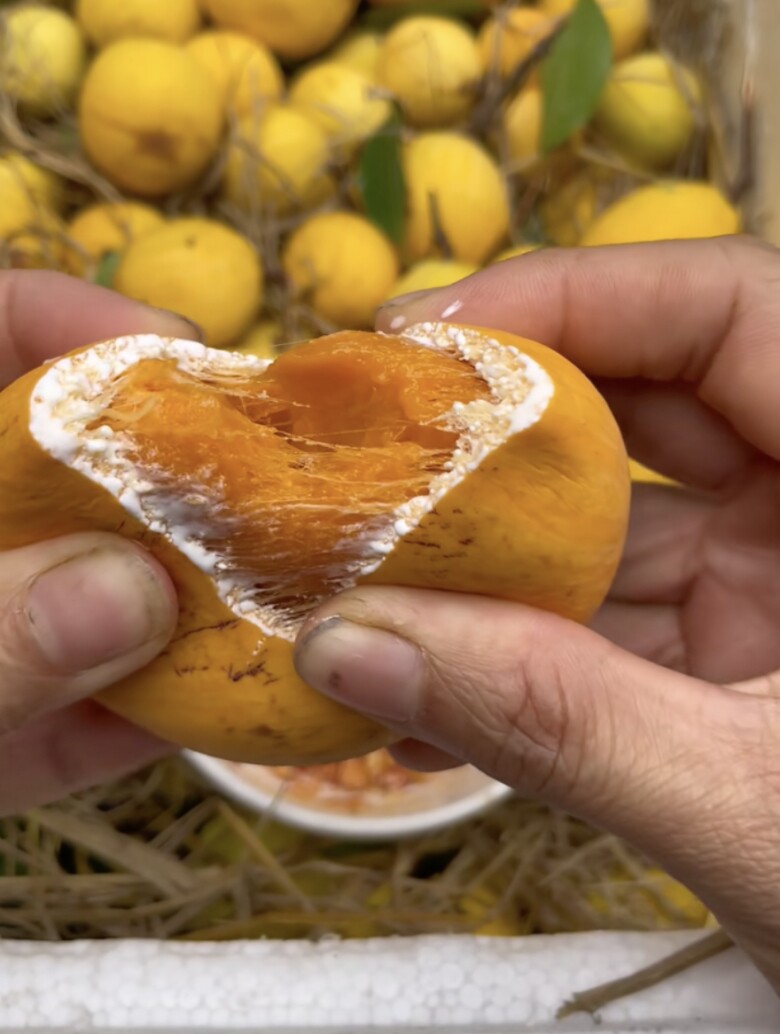
With its tangy taste, the gùi fruit captivates the attention of natural food enthusiasts, especially women.
The gùi fruit season usually begins around April to June every year. During this time, the forests of Tri Tôn and Tịnh Biên districts, bordering the frontier areas, resonate with the footsteps of locals venturing into the forest to harvest the fruit.
The golden clusters of gùi fruit on the branches signal the arrival of summer. Locals bring baskets, bags, or sacks to collect the fruit, both as a treat for their families and to sell to traders at prices ranging from 50,000 to 70,000 VND per kg, depending on quality and ripeness. In some places, the price can exceed 120,000 VND per kg due to high demand and limited supply.
The unique taste of gùi fruit leaves an indelible impression. When you bite into a ripe segment, you first experience a mild sourness on the tip of your tongue, followed by a delicate sweetness and a soft, chewy texture reminiscent of milk candy infused with a hint of yogurt.
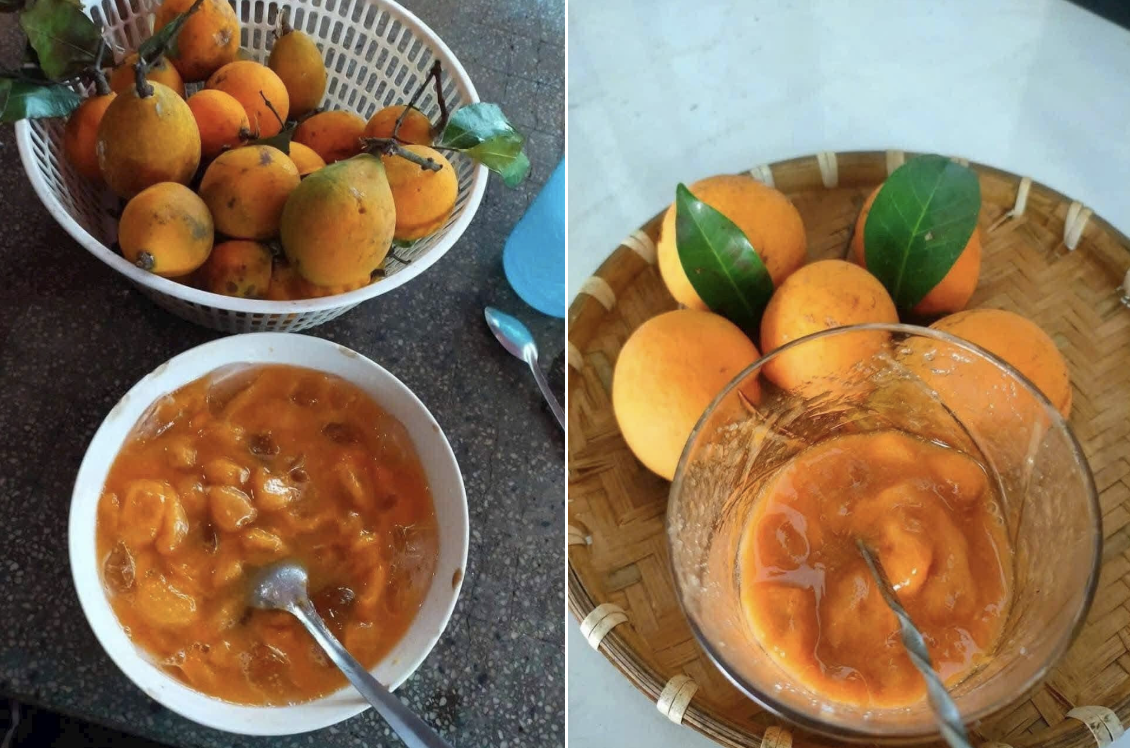
Thanks to its distinctive sweet and sour flavor, the gùi fruit is considered an ideal summer treat in the Mekong Delta. Some households even pickle gùi fruit with rock sugar and salt in glass jars to make a refreshing drink that helps cool the body and quench thirst.
When visiting An Giang during the gùi fruit season, tourists can easily find fresh gùi fruit at local markets such as Nhà Bàng and Ba Chúc, or at stops near eco-tourism sites like Trà Sư Melaleuca forest and Núi Cấm mountain. Street vendors also sometimes sell ripe gùi fruit by the roadside, attracting curious tourists to sample this unique delicacy.
In addition to being consumed fresh, gùi fruit is transformed into various specialty dishes. One of the most popular preparations is gùi fruit salad with salt and chili, where the segmented fruit is sprinkled with pink salt and crushed chili, resulting in a delightful combination of salty and spicy flavors. For those with a sweet tooth, gùi fruit tossed with sugar, ginger, and shrimp salt offers a unique snack.
According to local wisdom, the gùi fruit possesses medicinal properties. Traditional medicine practitioners believe that this fruit has a cooling effect, aiding in detoxification, digestion, and skin enhancement. In some areas, the sap of the gùi tree is used to heal minor wounds or as a poultice to relieve muscle pain. However, as there has been limited scientific research on this fruit, these benefits are primarily based on anecdotal evidence.
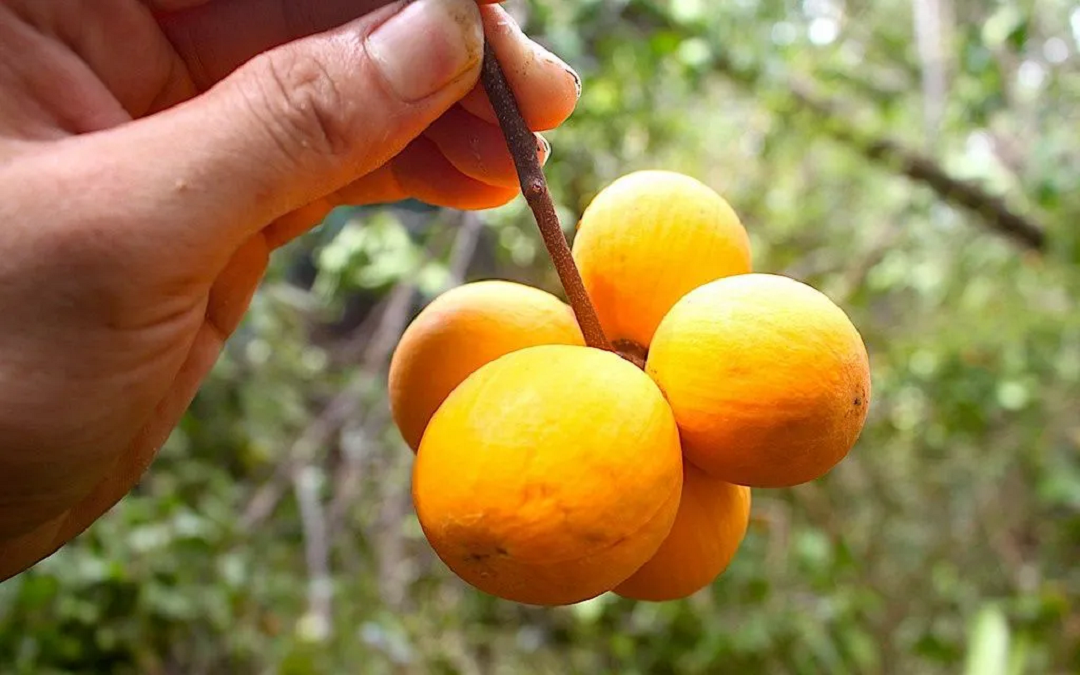
The gùi fruit is challenging to obtain as it grows deep in the forest, and only those familiar with the jungle can find it. Consequently, this specialty fruit commands a high price during the season.
In recent years, gùi fruit has gained recognition beyond its native region, with forest product exploitation units introducing it at food fairs and mountain product exhibitions. Displays of the golden gùi fruit have intrigued city dwellers. Some restaurants specializing in forest cuisine in Ho Chi Minh City and Can Tho have included gùi fruit salad on their menus, offering a taste of the wild within the modern urban setting. This integration is a positive step towards the sustainable conservation and utilization of precious forest products like the gùi fruit.
However, due to its wild nature and difficulty in cultivation, gùi fruit remains a seasonal delicacy, heavily dependent on weather conditions. Prolonged droughts can significantly reduce its yield. Harvesting gùi fruit should be done responsibly, avoiding excessive picking or branch breaking to ensure the tree’s growth in subsequent seasons.
If you find yourself in An Giang during the summer, be sure to indulge in the unique flavor of the gùi fruit, a golden-orange delicacy of the Seven Mountains region. Its refreshing taste and fragrant aroma will leave you with fond memories.
The Wild Beast that Strikes Fear into Many Hearts is Actually a Delicacy in the Western Region, Reserved for Honored Guests
Although the snake may be a creature that inspires wariness in many, the unique and delectable dishes featuring this reptile in the Mekong Delta, particularly in Tien Giang province, offer an unforgettable culinary experience. The distinct flavor of snake-based cuisine in this region captivates diners, making it hard to resist coming back for more.


























